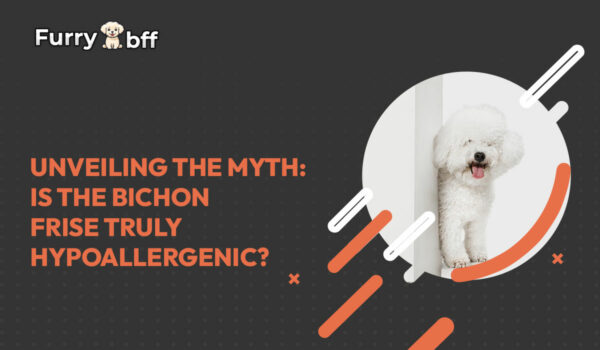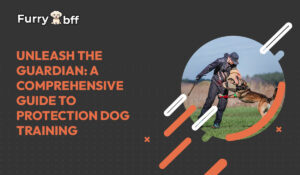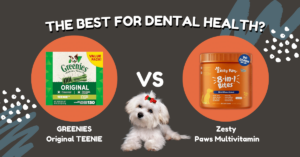The Bichon Frise is popular among dog lovers with its fluffy white coat and endearing personality. One of the breed’s most commonly touted features is its hypoallergenic nature, making it an appealing option for individuals with allergies. In this blog, we will explore the truth behind the Bichon Frise’s hypoallergenic reputation, shedding light on what it means to be hypoallergenic and whether this charming canine lives up to the claim.
Understanding Hypoallergenic Dogs
Before delving into the Bichon Frise’s hypoallergenic status, it’s crucial to understand what hypoallergenic means in the context of dogs. A hypoallergenic dog is less likely to trigger allergic reactions in individuals prone to pet-related allergies. These allergies are typically caused by a protein found in a dog’s skin cells, saliva, and urine, which can be shed and spread through dander.
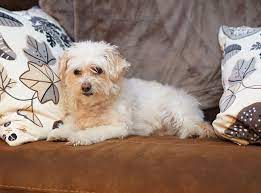
The Myth of the Bichon Frise’s Hypoallergenic Nature
While it is widely believed that the Bichon Frise is a hypoallergenic breed, it is essential to clarify that no dog can be entirely hypoallergenic. All dogs, regardless of breed, produce some level of allergens. However, certain breeds, including the Bichon Frise, may produce fewer allergens or shed less dander, making them more tolerable for some allergy sufferers.
Factors Contributing to the Bichon Frise’s Allergen Profile
The Bichon Frise’s allergen profile is influenced by various factors that contribute to the number of allergens the breed produces. While the Bichon Frise is often considered a hypoallergenic breed, it’s crucial to understand that no dog is entirely allergen-free. Here are the key factors that contribute to Bichon Frise’s allergen profile:
Coat Type and Shedding
The Bichon Frise has a dense, curly coat that sheds minimally. Compared to breeds with continuously growing hair, such as Poodles, the Bichon Frise’s coat tends to trap loose hairs and dander, reducing the amount released into the environment. However, it’s important to note that all dogs shed at least a little, and even low-shedding breeds like the Bichon Frise can produce allergens.
Dander Production
Dander is the microscopic particles of dead skin that animals, including dogs, shed regularly. It contains allergenic proteins that can trigger allergic reactions in sensitive individuals. While the Bichon Frise’s coat may trap some dander, they still produce it to some extent. Dander production can vary between individual dogs within the breed, and factors like genetics, age, and overall health can influence the amount of dander produced.
Saliva Proteins
All dogs have allergenic proteins in their saliva. When dogs groom themselves, these proteins are transferred to their fur and skin. As a result, allergens can be spread throughout the environment when the dog sheds hair or comes into contact with furniture, carpets, and other surfaces.
Grooming Practices
Regular grooming is crucial in managing a Bichon Frise’s allergen profile. Frequent brushing and bathing can help remove loose hairs and dander from the coat, reducing environmental allergens. Grooming also helps keep the dog’s skin and coat healthy, which can impact the overall allergen production.
Environmental Factors
The environment in which a Bichon Frise lives can also influence its allergen profile. Factors such as indoor air quality, humidity levels, and dust mites can affect how allergens are distributed and dispersed in the home.
While the Bichon Frise is often considered a hypoallergenic breed due to its low-shedding coat and limited saliva spread, it’s crucial to remember that no dog is entirely allergen-free. The Bichon Frise’s allergen profile is influenced by its coat type, shedding, dander production, saliva proteins, grooming practices, and environmental conditions. For allergy sufferers considering a Bichon Frise as a pet, it’s essential to be aware of these factors and to consult with allergists or spend time with the breed to gauge individual tolerance levels. With proper care and management, many allergy sufferers can enjoy the delightful companionship of a Bichon Frise without compromising their well-being.
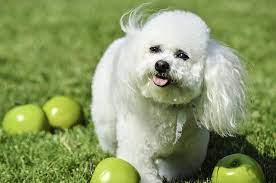
Tips for Allergy Sufferers Considering a Bichon Frise
Careful preparation and understanding are key to ensuring a harmonious and comfortable living environment for allergy sufferers considering bringing a Bichon Frise into their home. While the Bichon Frise is often considered a hypoallergenic breed, it’s essential to remember that individual sensitivities vary. Here are some tips to help allergy sufferers make an informed decision and create a pet-friendly space that minimizes allergen exposure:
Allergy Testing
Before considering any dog breed, including the Bichon Frise, allergy sufferers should undergo allergy testing to identify specific triggers and the severity of their allergies. Understanding your allergies will help you make a well-informed decision about pet ownership.
Spend Time with Bichon Frises
Interact with Bichon Frise before committing. Spending time with the breed in person will give you a better sense of how your allergies might respond to them. Consider visiting friends or family with Bichon Frise or at dog shelters or breed-specific events.
Consult with Allergists
Seek advice from allergists or immunologists who specialize in pet allergies. They can guide managing allergies, potential treatments, and strategies to minimize allergen exposure.
Regular Grooming
Commit to regular grooming for your Bichon Frise. Frequent brushing and bathing can help reduce shedding and dander, minimizing allergen dispersal in the home.
HEPA Vacuuming
Invest in a high-quality vacuum cleaner equipped with a HEPA filter. Regular vacuuming of floors, carpets, and furniture will help remove pet dander and allergens from the environment.
Clean Living Space
Maintain a clean and well-ventilated living space. Wash pet bedding frequently and use washable covers on furniture to minimize allergen accumulation.
Air Purifiers
Consider using air purifiers with HEPA filters to improve indoor air quality further and reduce airborne allergens.
Limiting Pet Access
Establish pet-free zones in your home, such as bedrooms or specific furniture, to create allergy-safe spaces.
Personal Hygiene
Practice good personal hygiene, such as washing hands after interacting with your Bichon Frise and avoiding touching your face.
Regular Vet Checkups
Ensure your Bichon Frise receives regular vet checkups and is up-to-date on vaccinations and parasite prevention. A healthy dog is less likely to exacerbate allergies.
Monitor Allergy Symptoms
Pay attention to how your body responds to your Bichon Frise. If you experience severe allergy symptoms affecting your quality of life, consult your allergist to explore additional management options.
Bringing a Bichon Frise into your home as an allergy sufferer is possible with careful planning and proactive measures. Allergy testing, spending time with the breed, regular grooming, and maintaining a clean living space are essential to ensure a comfortable coexistence. By taking these precautions and consulting with allergists, many allergy sufferers can enjoy the delightful companionship of a Bichon Frise without compromising their well-being.
Conclusion:
While the Bichon Frise is often considered a hypoallergenic breed due to its low-shedding coat and limited saliva spread, it is essential to remember that no dog is entirely allergen-free. Individuals with allergies should take the time to understand their specific triggers and consider spending time with Bichon Frises before deciding to bring one into their home. With proper grooming, regular cleaning, and allergy management, many allergy sufferers can find joy in the delightful companionship of a Bichon Frise without compromising their well-being.
Find out more blog about The Hairy Hairless Chinese Crested: A Unique Canine Blend of Elegance and Fluff

